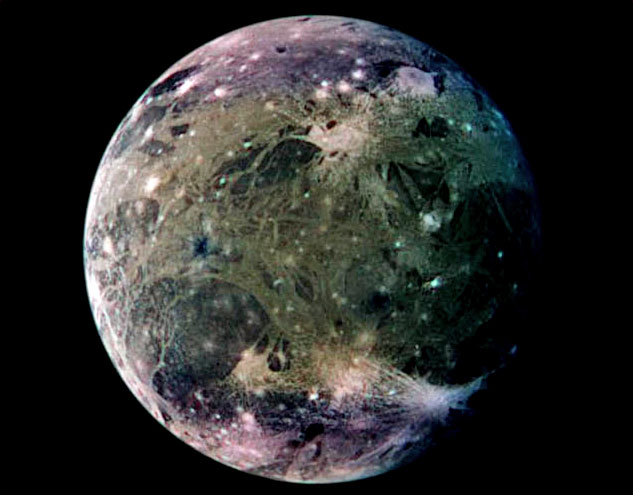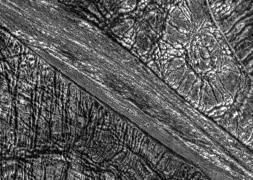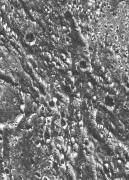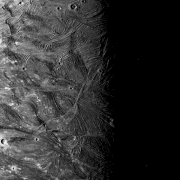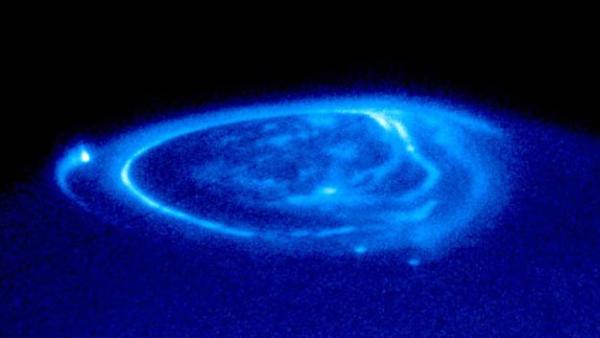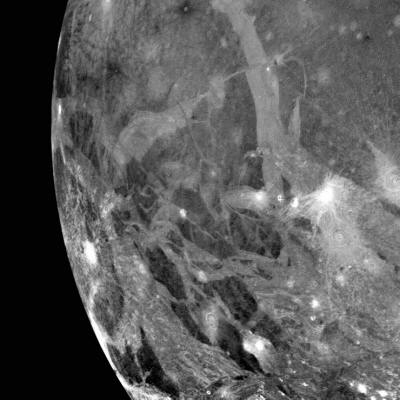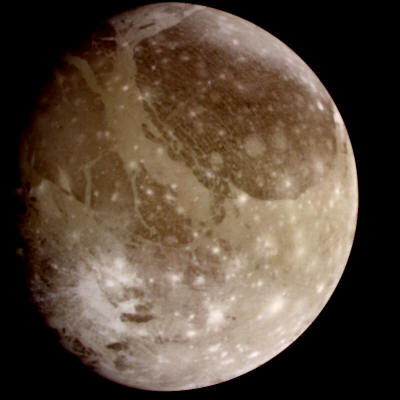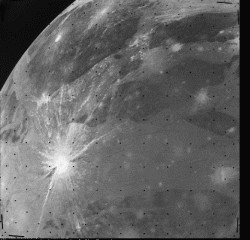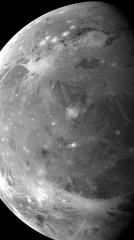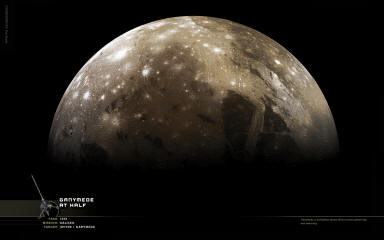|
|
|
by Stephen Smith
Aug 15, 2007
Ganymede, the third
moon from Jupiter and the largest planetary satellite in the solar
system
The solar system's largest moon shows
signs of what could be electric scarring. Is plasma discharge
responsible for the topography we see?
Of all the moons, Ganymede is possibly the most exotic, with a wild mix (below image 1) of topography, fractures (below image 2), craters (below image 3) and sinuous rilles (below image 4).
Ganymede is unique among moons in that it has a magnetic field surrounding it, something even Mars does not possess. In December 1995, the Galileo spacecraft entered orbit around Jupiter.
During a flyby of Ganymede at an altitude of only 838 kilometers, Galileo discovered a dipole magnetic field very much like the one surrounding Earth.
As with Io, the signature of Ganymede's flux tube, the electric current that connects it with Jupiter, can be seen in the aurora at the poles (below image).
With a mean diameter of 5262 kilometers, Ganymede (image above) is the largest moon orbiting any planet and is the fourth largest rocky object after the planet Mars.
The magnetic field is supposedly being created by the moon's core in a "dynamo" of sorts - once again like the Earth's core is supposed to be generating its magnetic field. There is an ambiguity, however.
Ganymede's core is too hot to hold
on to permanent magnetism. But Ganymede is so small that, according
to conventional astro-geology, it should have cooled off billions of
years ago and should not have a liquid core in the first place.
If that were the case, then,
Of course, the most obvious aspect of Ganymede's bizarre nature is its surface (above image) and the manifold examples of apparent electric discharge machining (EDM).
Previous Thunderbolts Picture of the Day articles presented evidence for the hypothesis by showing how crater chains form on Ganymede and other planets and moons.
Another likely example of EDM is the huge circular structure (below image) dominating an entire hemisphere.
Within the darkened circle, several bright craters are arrayed in a spiral shape that gradually decreases in diameter toward the center. Some craters have rays (below image 5) extending outward for several kilometers in all directions.
Several have one or more nested concentrically (below image 6) within the other.
image 5 image 6
Such features require a chain of unlikely coincidences if mechanical impacts are to explain them, but EDM creates such scars naturally.
NASA plans more missions to the moons of Jupiter in the next ten years.
As more data is returned from a growing number of deep space probes, perhaps the evidence for electric effects will help to increase awareness for electricity in space.
|


